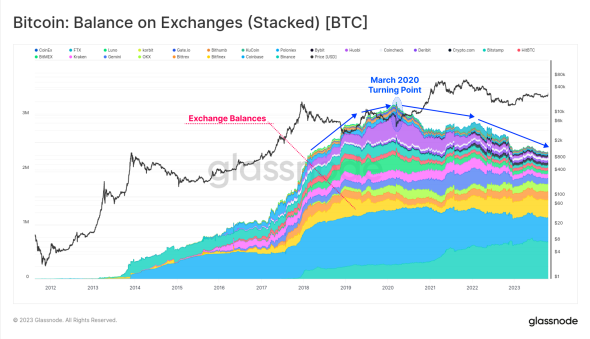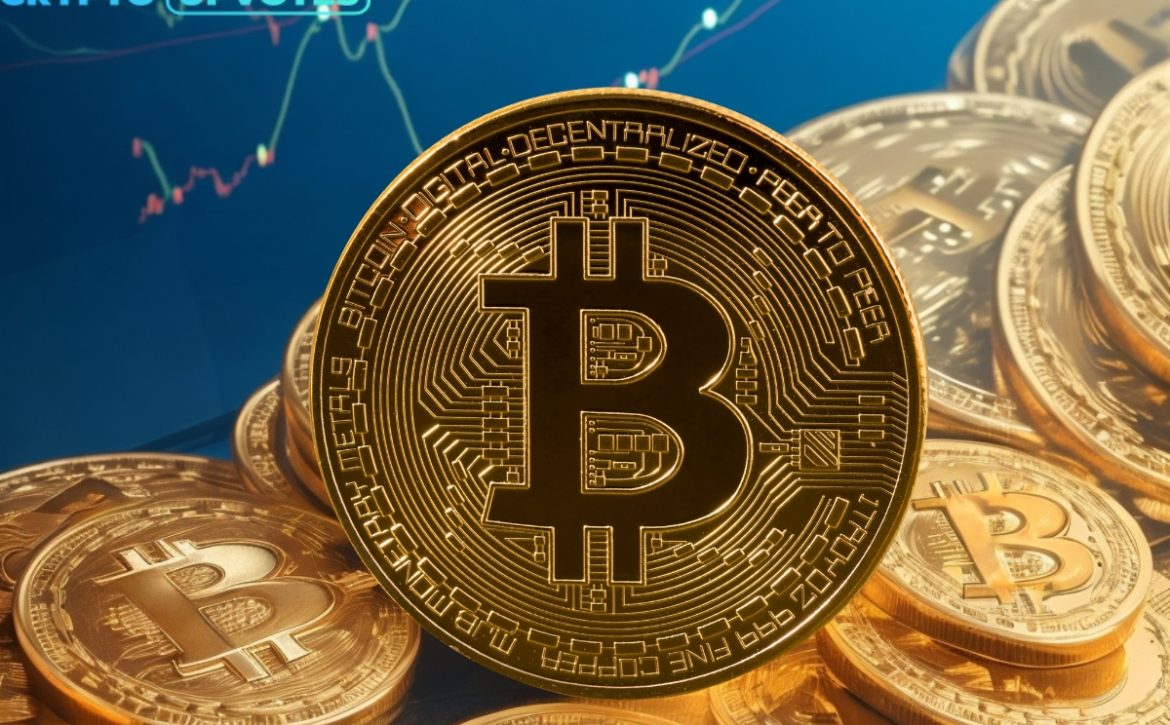Our experts analyzed the market situation and told how it may change in the coming week for Bitcoin and the market as a whole
- 5 important events in the crypto market affecting the bitcoin rate for the week from October 30 to November 3:
- The US Federal Reserve meeting on November 1, which decided to keep the interest rate unchanged. This caused an increase in risk appetite.
- Fed chief Jerome Powell’s statements about a possible slowdown in the pace of future rate hikes. This also put pressure on the dollar and supported the bitcoin price.
- Investor expectations for the imminent approval of a spot bitcoin-ETF fueled interest in bitcoin earlier in the week.
- The publication of weak US labor market data on Friday reinforced expectations of a slowdown in Fed policy tightening.
- The price failed to consolidate above $35k.
Last week bitcoin traded in the range of $34-36 thousand. On October 30, the price of BTC fell to $34,474, but remained in a horizontal trend around $34,300. On October 31, the price rose slightly to $34,639, continuing to consolidate in anticipation of the US Federal Reserve results.
Detailed analysis of last week and conclusions
On November 1, there was a sharp rise to $35,421 after the U.S. Federal Reserve meeting. The growth was caused by investor optimism after the Fed head’s statements about a possible slowdown in rate hikes.
On November 2, the price rose to a weekly high of $35,984, from which the correction began. It was aided by a decline in optimism about the imminent approval of a spot bitcoin-ETF. Amid the failed offensive, the price fell to $34,300.
On November 3, at the end of the day, bitcoin fell in price by 0.64% to $34716. In general, trading was calm, without sharp bursts of volatility.
During the first half of the day, there was a gradual decline in cryptocurrency quotes. The rate fell to the level of $34,120, followed by a slight recovery.
Some support for the market was provided by the data on the situation in the U.S. labor market, published at the U.S. session. The indicators turned out to be weaker than market expectations. In particular, the number of new jobs for October amounted to 150 thousand instead of the expected 180 thousand. The previous figure was revised to 297 thousand from 336 thousand. And the unemployment rate rose to 3.9% from 3.8%, with expectations of 3.8%. And average hourly earnings rose 0.2%, compared with a 0.2% increase in the previous month, and a forecast of 0.3%.
Such data reinforced investor expectations that the US Federal Reserve is nearing the end of its monetary tightening cycle. This provided support for risky assets. Since the bitcoin rally was at the end of October. The reaction to the weakening dollar and the growth of stock indices was weak. The euphoria from expectations of spot ETF approval is fading.
What will happen to the bitcoin price in the coming days
Buyers showed themselves well, as they used the provided time window. And to carry the shorts above $35,200 and to get as close as possible to the level of $36 th. External conditions remain favorable for the upward movement. Only according to the calculated cycles is approaching the correction phase with a target of $33 thousand. And it may last from November 9 through November 21. The smaller the correction will be, the higher the probability of growth up to $42 th.
Temporary resistance is the zone of $35,000 – $35,150. Taking into account the weakness of the dollar and the weekly growth of stock indices. The buyers may have time to check the stops behind the level of $36 th. And it is logical, as the truncated formation is formed on the daily timeframe.
Thus, bitcoin demonstrated moderately positive dynamics this week. Our experts note that the key levels of the corridor remain $34 thousand and $36 thousand. To enter the positive zone, it is necessary to confidently overcome the resistance at $36 thousand. Buyers are better to go on the defensive and gain strength for the end of November: efforts will be required to pass new resistances.












